Content optimization is a must-have strategy for brand owners looking to boost their rankings on search engines, increase conversions, and boost their social media exposure.
In this guide, you’ll learn the top content optimization strategies that are proven to work.
It’s the same strategies we use on our blog and generate thousands of visits per month from organic searches.
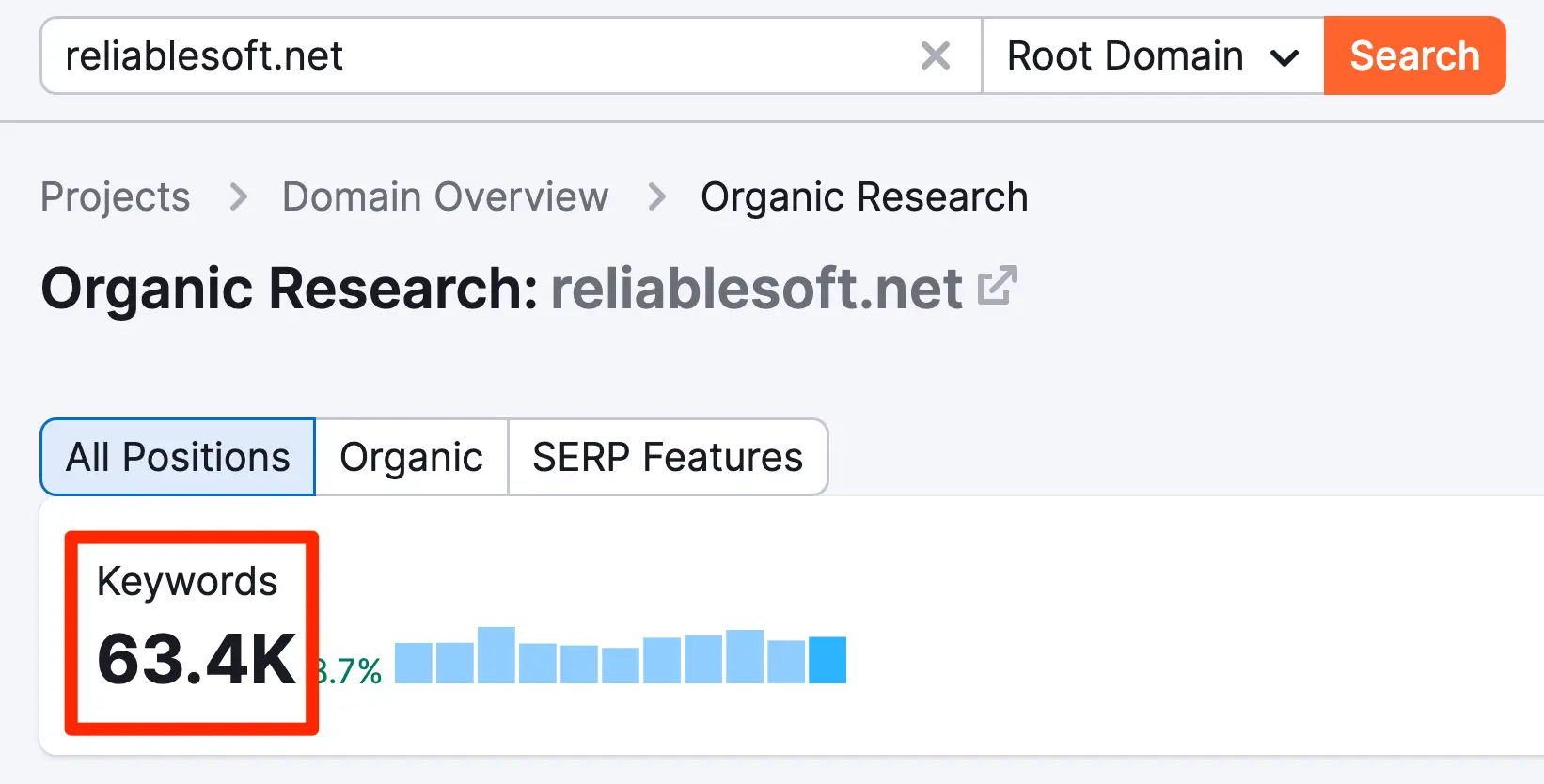
1. What is Content Optimization?
Content optimization is the process of improving your online content to help you boost your search engine rankings, online visibility, and conversions.
But this doesn’t mean optimizing it for search engine bots and forgetting your human readers. On the contrary, optimizing your content for humans makes it search-engine friendly.
There are many reasons why you should invest in content optimization.
Increases website visibility on search engines - You might have written the best article with in-depth insights and helpful advice, but if search engines can’t find it, you’re getting lost in the noise.
Increase conversions - Traffic for the sake of numbers isn’t beneficial. Your content might get hundreds of thousands of views, but if you can’t convince 10 quality leads to convert, then this is a big signal that your content is not optimized.
Improves user experience and satisfaction - Creating SEO-optimized content helps you strike the perfect balance between SEO and user experience. It’s a win-win situation for both search engine visibility and a great user experience.
Offers competitive advantage in saturated markets - Besides higher rankings on search engine results pages (SERPS), optimized content will boost your engagement rates, align your content marketing goals, and give you a competitive advantage in a saturated market.
2. How To Optimize Content For SEO
Here’s a list of the most effective SEO tips to help you optimize your content for SEO:
- Provide an answer as fast as possible
- Satisfy search intent
- Target a specific keyword
- Enrich your content with visuals
- Make your content easy to read
- Use interesting titles
Provide an Answer as Fast as Possible
There’s one cardinal rule of SEO content optimization- provide the best possible answer as soon as possible.
Sometimes, you’re tempted to write a whole essay introducing your readers to the topic or giving them a background.
But this isn’t always the best strategy.
Remember, most of your readers have a short attention span. They want what they’re looking for, and they want it fast.
Giving your audience what they want as fast as possible is the perfect way to hook them into your content.
Satisfy Search Intent
It doesn’t matter how well you’ve written your content or followed every other tip in this guide.
If your content isn’t satisfying search intent, your marketing goals will remain far-fetched.
For starters, search intent is the goal users seek to meet when they enter certain keywords into a search engine.
Content that meets your target audience’s search intent will answer their questions and inform them in the right way.
For example, here are Google’s top results for “best content marketing courses”:
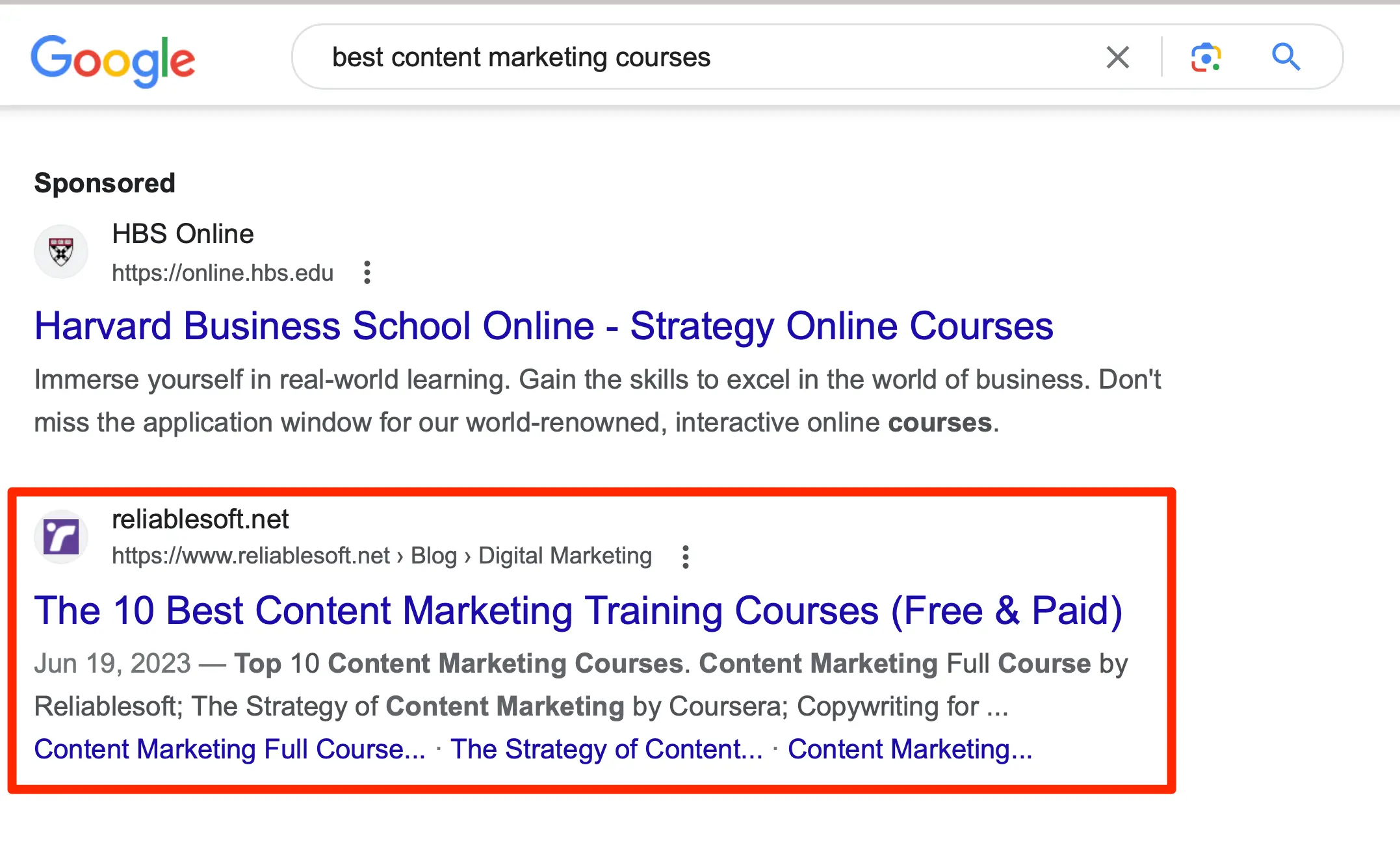
It’s pretty clear that people who search for this are looking for a list of the best courses to learn content marketing.
To satisfy their search intent, you must provide users with the best list they can find.
And there are various ways you could do that:
- Make a bigger list
- Make a list that your readers can filter by course price
- Make a highly focused list of courses that have been proven to give the most results
At the end of the day, it’s up to you to come up with a unique angle for your content.
That’s the only way to satisfy user search intent and win with your content strategy.
Target a Specific Keyword
Using keywords in your content will help search engine bots understand what your content is about.
As such, it’s important to target a specific keyword to help your content reach your target audience.
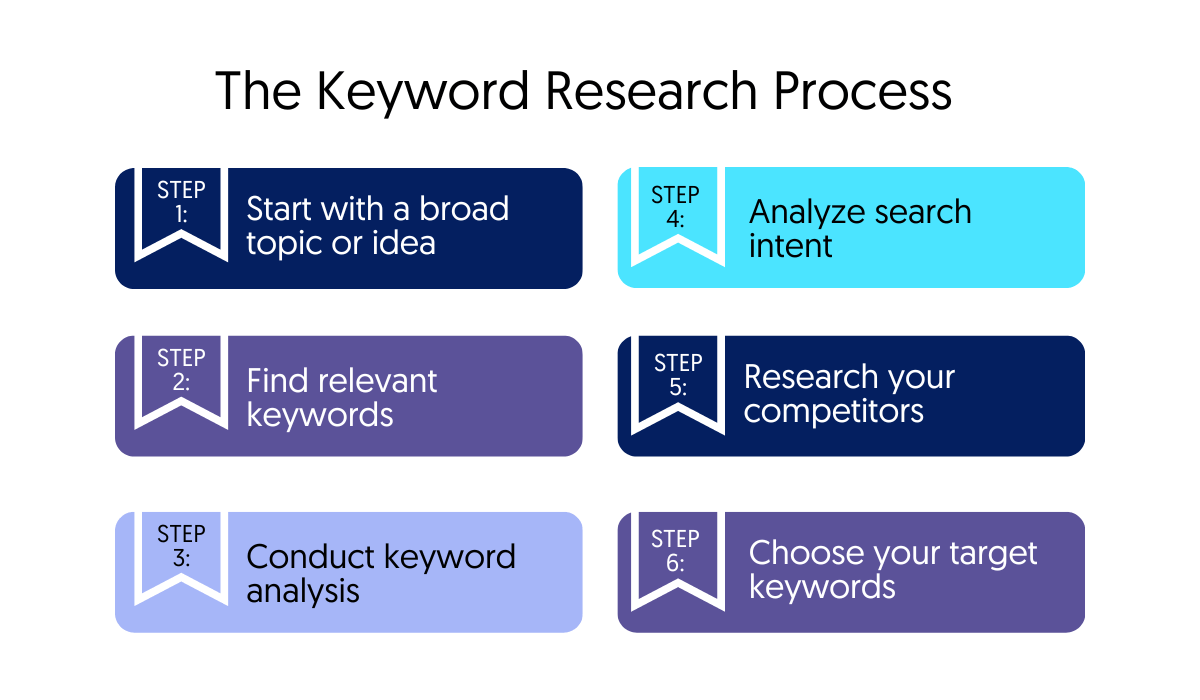
First, you must conduct keyword research to identify keywords your audience uses to search for related products or services.
Once you’ve identified your target keywords, it’s time to implement them into your web pages.
There are specific keyword implementation strategies to help with this step. For example, it’s important that you insert them naturally to flow with the rest of your content.
Beware of keyword stuffing. While it’s an outdated black hat SEO tactic, trying to manipulate search results by using keywords unnaturally can lead to penalization by Google.
Only insert keywords naturally.
While many people will focus on using the target keywords in the body, there are other various places to insert your target keywords creatively. They include:

- Web page URL
- Title
- Meta description
- Headings and subheadings
- Introduction
- Anchor texts
This will help Google understand that your web page is relevant to the target keyword and show it to users on the search results.
Enrich Your Content With Visuals
Visuals have been proven to boost user engagement with your optimized content marketing.
Adding visuals to your content will help more visitors stay on your page for longer and pay more attention to the information you’re presenting.
Multimedia in your content makes it easily digestible for your target audience since they don’t have to look at huge blocks of text.
You can consider the following ideas to help you make your content visually rich:
- Create and add relevant visuals
- Embed videos from your YouTube channel
- Include useful industry studies
Make Your Content Easy to Read
Most of your target audience skim through content on the internet. Making your content easy to read will do wonders for your content marketing goals.
This involves making your content easy to the eye and easy to digest. Effectively convey information by introducing distinct elements to break visual monotony.
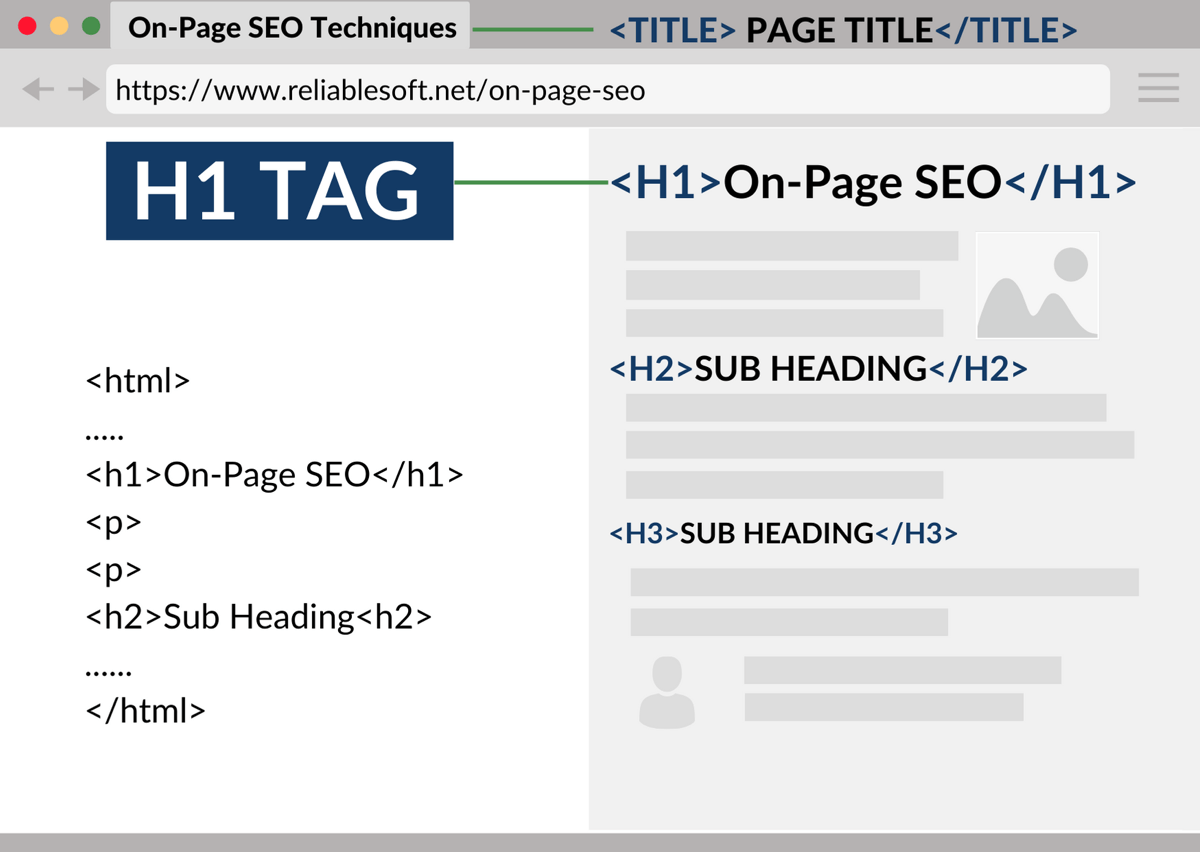
Use these formatting techniques to make your content scannable and visually appealing:
- Use headings and subtopics to break up your content
- Write in short paragraphs (ideally less than 90 words each)
- Use bullet points and ordered lists
- Bold, italicize, and underline any important points or keywords
- Highlight your call to action
An insider secret to make your content easy to read is to have more white lines in your content.
Breaking your text down will make your content easy to read and digestible.
Use Interesting Titles
Your titles and headlines are vital. You want to create an impact fast and grab your readers’ attention, given the limited attention span of the average website user.
Since your titles tell your readers what your content is about, ensure you’re straightforward. Your readers don’t have to be guessing what you’re talking about.
Make the headlines interesting to grab their attention.
Asking questions will also make your titles captivating. Use the questions the reader has in mind.
To learn more about SEO, read these guides:
3. How To Optimize Content For Backlinks
A content optimization strategy also involves creating content that’s backlink-worthy.
Here are the qualities of content that attract backlinks:
- Originality- Be a thought leader in your industry. Always offer an original concept or opinion with the potential to shake things up in your industry or influence how people see certain things. Sharing unique and research-driven content is a perfect way to be original and attract backlinks.
- Controversial- Seek to offer content that challenges the status quo. Swimming against the tide will help you stand out and gain traction. Be careful not to be controversial for the sake of getting attention. This may have negative effects on your strategy in the long term.
- Authoritative- In some niches, such as nutrition and healthcare, it’s mandatory to have a qualified professional write or review your content. But this needs to apply across all sectors. Your content carries more weight when written by a competent authority on the subject. More blogs will have backlinks to your content due to the authority.
- Have a noticeable voice- A unique voice will help you stand out from your competition. But a unique voice isn’t enough. It needs to be recognizable.
- Leverage the latest trends- Follow and take advantage of the latest trends in your industry. For example, you can monitor topics that journalists are linking back to. You can then create content around these topics to get backlinks as well. But don’t just jump on any bandwagon for the sake of it. Only do it if you have something genuine to say.
4. How To Optimize Content For Conversions
Boosting organic traffic isn’t the only goal of your content optimization strategy.
Your content must generate some conversions to bring in some money and have a justifiable ROI.
All your content pieces published on your website should have a conversion path.
Always ask yourself: What course of action do I want the user to take after reading my content?
Here are some pointers to consider to optimize your content for conversions:
Focus on Your Target Audience
Understanding your target audience lays a good foundation for creating content that converts.
Sometimes you might think that no one else knows your target audience better than you.
But until you put yourself in their shoes, you won’t truly communicate with them and convert them into buyers.
- What are your target audience’s needs, wants, and desires?
- What is their level of awareness of what you’re offering?
- Do they really know they have a problem?
- Do they know what exactly the problem is?
Answering these questions will help you create content in a language that your audience understands.
If you can make them understand that they have a problem and that you have the solution, you can increase your conversion rate.
Write Persuasively
Copy that converts leads into clients is persuasive.
One way to write persuasively is to present your product/service features as benefits. This is critical because it helps your readers resonate their wants with these benefits.
The benefit you present is what addresses their problems. It will give them the confidence to take the next step and try out your products or services.
For example, instead of saying, “Our ABC products are easy to use and understand,” you can say, “Our ABC products provide you with the tools you need to start an online business in less than 60 days.”
Also, be conversational in your content. Don’t be afraid to start sentences in an unconventional way. Write how you speak.
Polish Your CTAs
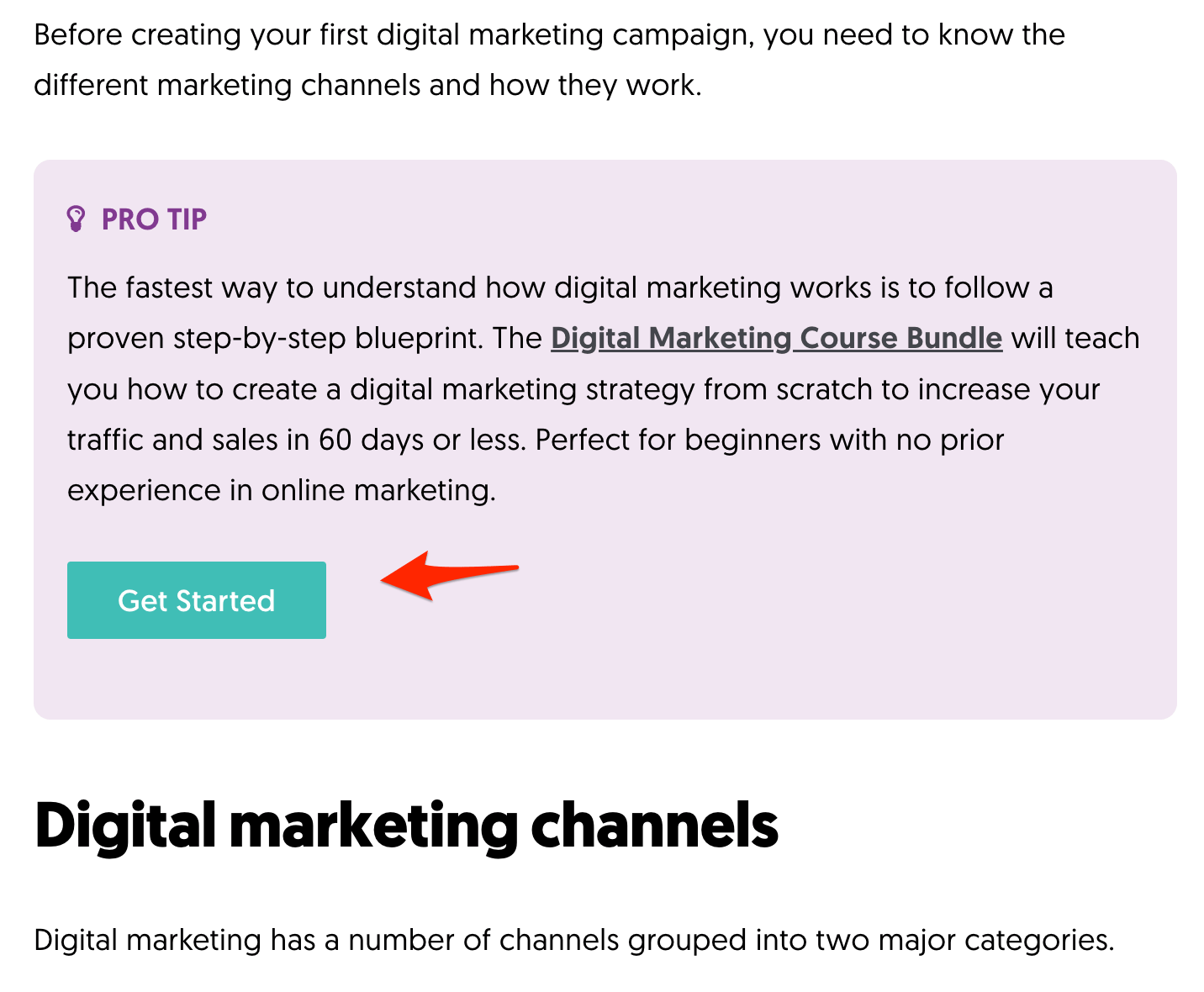
Getting your reader to act is the end goal. As such, your content must have strong and compelling CTAs.
Be intentional when writing your CTAs.
You can invite them to sign up for your newsletter, start a free trial, complete a survey, make a purchase, or contact you.
Whichever your goal is, here are some tips for writing compelling CTAs:
- Be persuasive
- Use active language
- Address the reader directly
- Be direct- go straight to the point
- Inspire and motivate your readers
5. How To Optimize Content For Social Media Exposure
Social media plays an indirect role in search engine rankings; thus, providing your visitors with high-quality content suitable for social media sharing is becoming more important.
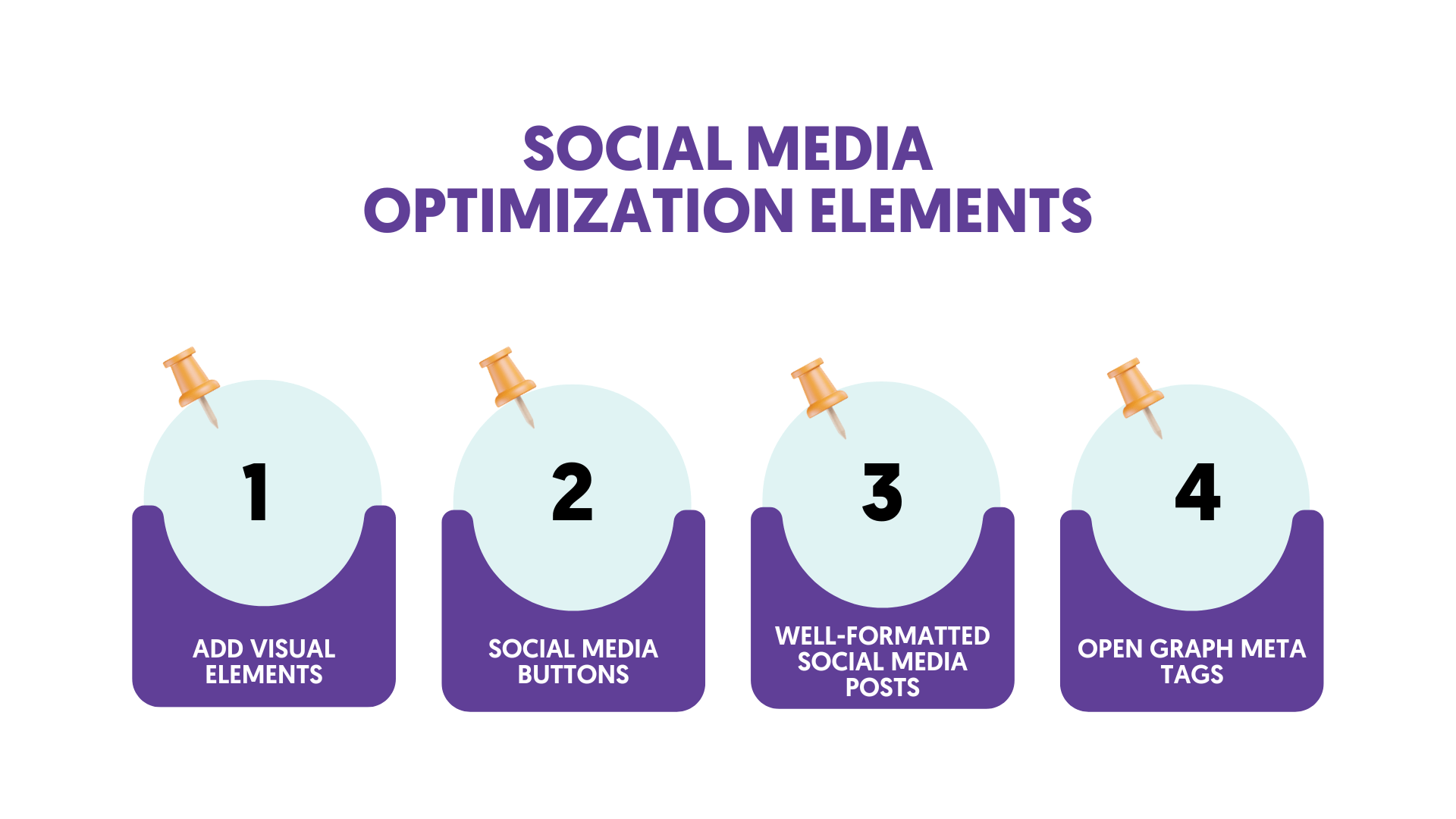
Here’s how:
- Diversify your content- Due to the rapid-paced nature of social media, capturing your audience’s attention on social media can be an uphill task. But you can get their attention with diverse content types, such as blog posts, visuals, infographics, and data visualizations. The idea here is to give your audience various options to consume your content.
- Use short blog post headlines- Shorter headlines compel your audience to share your content on social media. The headlines grab your readers’ attention, create a desire to read, and trigger a sense of urgency to share the article. Remember, your headline will be seen on Facebook, Twitter, LinkedIn, LinkedIn, and many others.
- Take images seriously- Instagram and Pinterest gained much traction for a reason. Visual content will boost your exposure on social media. Invest in high-quality images and videos for your website content, and you’ll see returns. A simple action, such as increasing pixel width so your photos can cover the entire width of your blog pages, can increase your social media shares.
- Ensure the social sharing buttons are prominent- Social sharing buttons are vital inclusions on our website’s homepage and individual pages. You want to make it easier for your readers to share your content with the click of a button.
Conclusion
Content optimization is an essential aspect of your SEO strategy. It will help you boost rankings on results pages, build authority, and convert leads into customers.
Remember, don’t write for search engine bots- write for your human readers.
While content optimization may seem like an uphill task, you can simplify the process by creating a checklist so you don’t miss any details.
And one more thing- content optimization is a marathon, not a sprint. It’s an ongoing process. You’re never really done.



